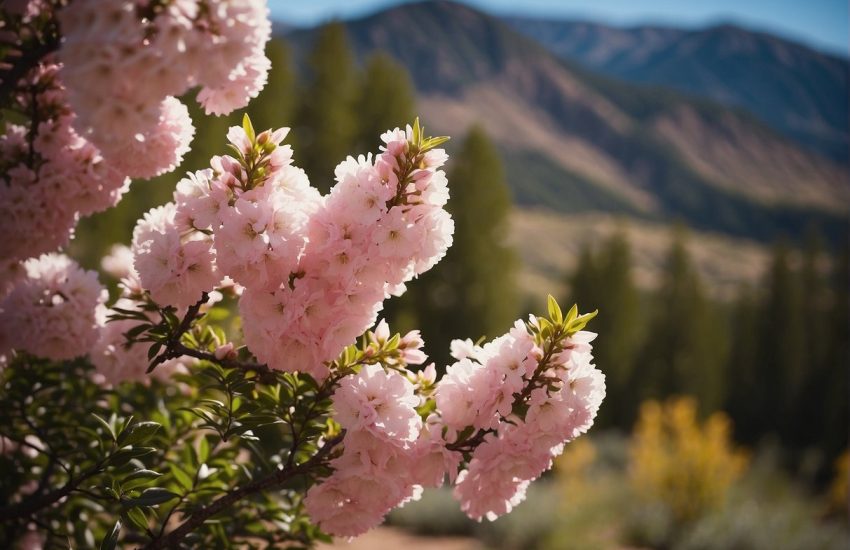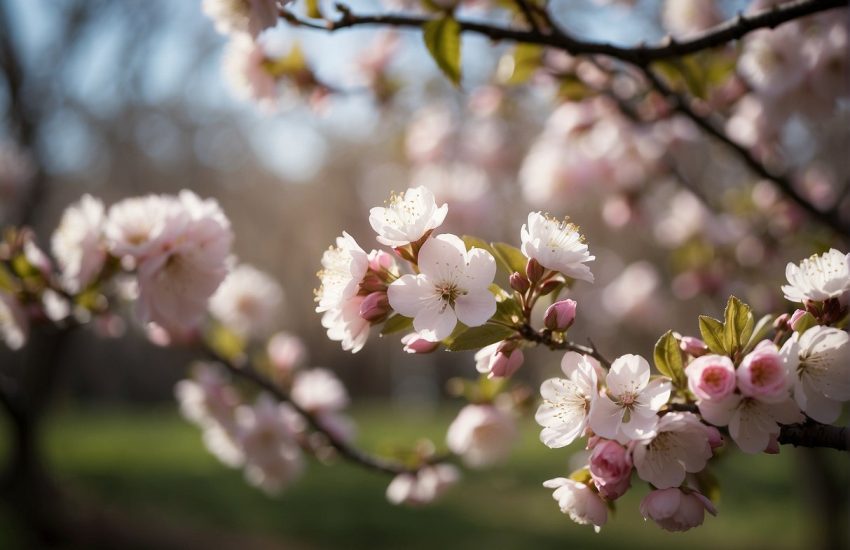Flowering Trees in Oklahoma: A Guide to the Best Varieties for Your Garden
Oklahoma is known for its diverse landscape, ranging from prairies to forests, and flowering trees are a beautiful addition to any garden or landscape. These trees not only add color and beauty to the surroundings but also provide a habitat for birds and other wildlife. Oklahoma’s climate is ideal for growing many types of flowering trees, making it easy to find one that will thrive in your area.

When it comes to choosing the right flowering tree for your garden or landscape, there are many factors to consider. Some popular options include the Redbud, Bradford Pear, and Serviceberry. Each tree has its unique characteristics, such as when it blooms, the color of its flowers, and the height it can reach. It’s essential to choose a tree that will complement your landscape and thrive in your climate.
Whether you’re looking to add a pop of color to your garden or create a beautiful focal point in your landscape, flowering trees are an excellent option. With so many types to choose from, it’s easy to find one that will suit your needs and preferences. By carefully selecting the right tree and providing it with proper care, you can enjoy its beauty and benefits for years to come.
Popular Flowering Trees in Oklahoma
Oklahoma is home to a variety of beautiful flowering trees that can add color and life to any landscape. In this section, we will discuss some of the most popular flowering trees in Oklahoma, including the Eastern Redbud, Oklahoma Redbud, Flowering Dogwood, and Southern Magnolia.
Eastern Redbud (Cercis Canadensis)
The Eastern Redbud, also known as Cercis Canadensis, is a small tree that is native to Oklahoma and is the state tree. It is known for its stunning pink or purple blooms that appear in early spring, before the leaves emerge. This tree prefers full sun to partial shade and can grow up to 30 feet tall. It is an excellent choice for an ornamental tree in any landscape.
Oklahoma Redbud
The Oklahoma Redbud is a cultivar of the Eastern Redbud and is known for its vibrant pink blooms that cover the tree in early spring. This tree prefers full sun exposure and can grow up to 20 feet tall. It is an excellent choice for any landscape and can add a pop of color to any garden.
Flowering Dogwood (Cornus Florida)
The Flowering Dogwood, also known as Cornus Florida, is a small tree that is native to Oklahoma. It is known for its showy white or pink flowers that bloom in early spring, followed by red fruit that attracts birds and butterflies. This tree prefers partial shade and can grow up to 30 feet tall. It is an excellent choice for adding color and shade to any landscape.
Southern Magnolia (Magnolia Grandiflora)
The Southern Magnolia, also known as Magnolia Grandiflora, is a large evergreen tree that is native to Oklahoma. It is known for its fragrant white flowers that bloom in late spring and summer, and its glossy green leaves that provide shade and shelter for birds and bees. This tree prefers full sun to partial shade and can grow up to 80 feet tall. It is an excellent choice for adding beauty and fragrance to any landscape.
In conclusion, these are just a few of the many beautiful flowering trees that can be found in Oklahoma. Each tree has its own unique characteristics and can add color, shade, and beauty to any landscape. Whether you are looking for a tree that blooms in the spring or summer, or one that is evergreen, there is a perfect tree for every garden.
Cultivation and Care for Oklahoma’s Flowering Trees

Planting and Sunlight Requirements
When planting flowering trees in Oklahoma, it is important to consider their sunlight requirements. Most flowering trees prefer full sun, but some can tolerate partial shade. It is crucial to choose the right location for planting, as it can affect the tree’s growth and blooming. Trees planted in containers can be moved around to find the best spot for them.
Soil and Water Considerations
Oklahoma has a humid subtropical climate, which means that the soil can be moist or dry, depending on the location. It is important to choose drought-tolerant trees that can withstand Oklahoma’s dry conditions. The soil should be well-draining to prevent waterlogging, which can lead to root rot. It is recommended to water the trees deeply and infrequently, rather than shallowly and frequently.
Maintenance and Pruning
Low-maintenance trees are ideal for Oklahoma’s climate. Flowering trees require minimal pruning, but it is important to remove dead or diseased branches to maintain the tree’s health and shape. Pruning should be done during the dormant season, which is usually in late winter or early spring. It is also recommended to fertilize the trees in the spring or fall to promote healthy growth.
When choosing flowering trees for landscaping or gardening in Oklahoma, it is important to consider their bloom color, size, and shape. Dwarf or compact trees are suitable for small gardens or containers, while larger trees are ideal for landscaping. Some popular drought-tolerant trees in Oklahoma include the Bald Cypress, Eastern Red Cedar, and the Lacebark Elm.
In conclusion, by selecting the right location, soil, and watering schedule, Oklahoma’s flowering trees can thrive and add beauty to any landscape or garden. By following the proper care and maintenance techniques, these trees can continue to bloom and provide enjoyment for years to come.


